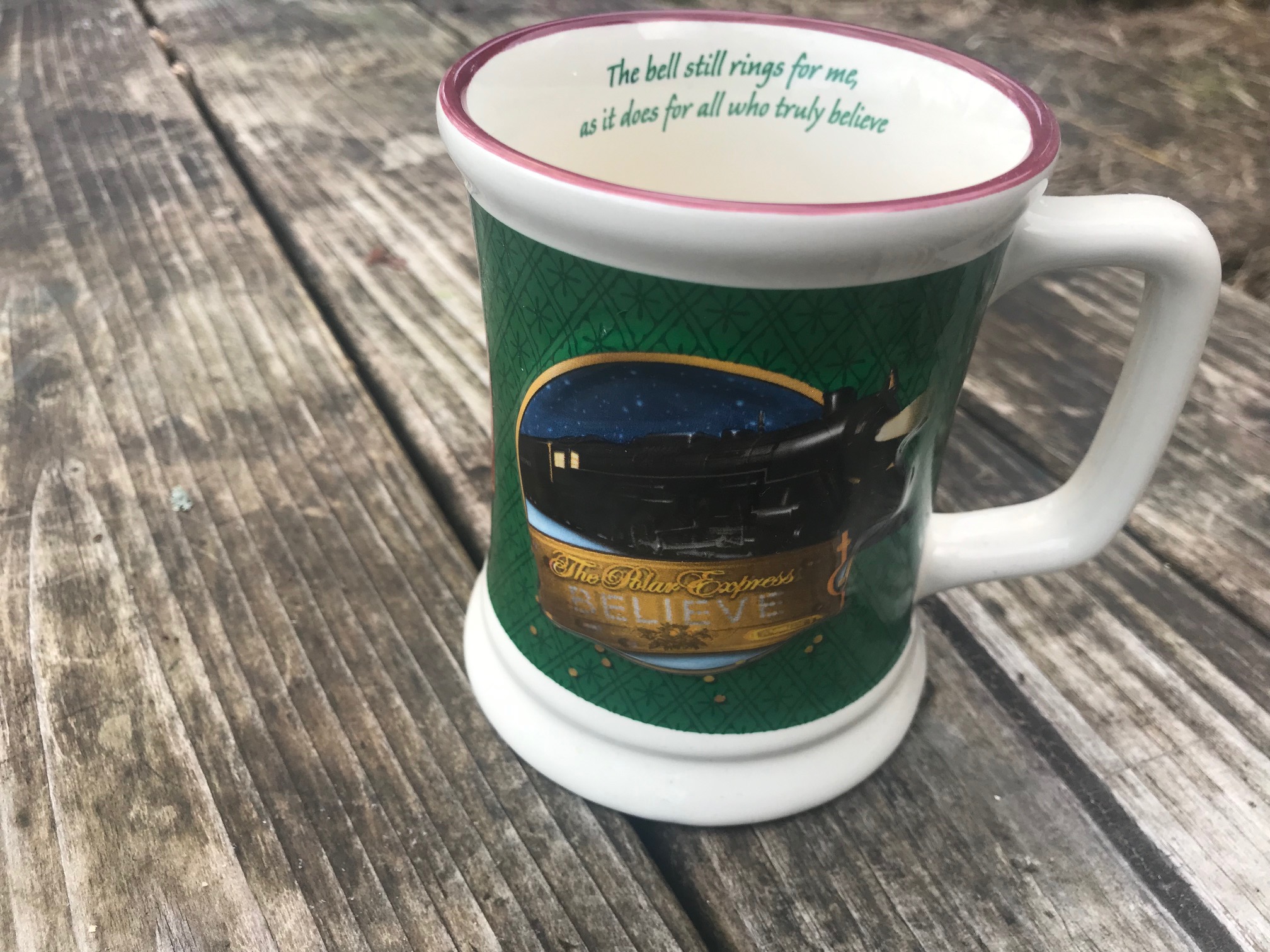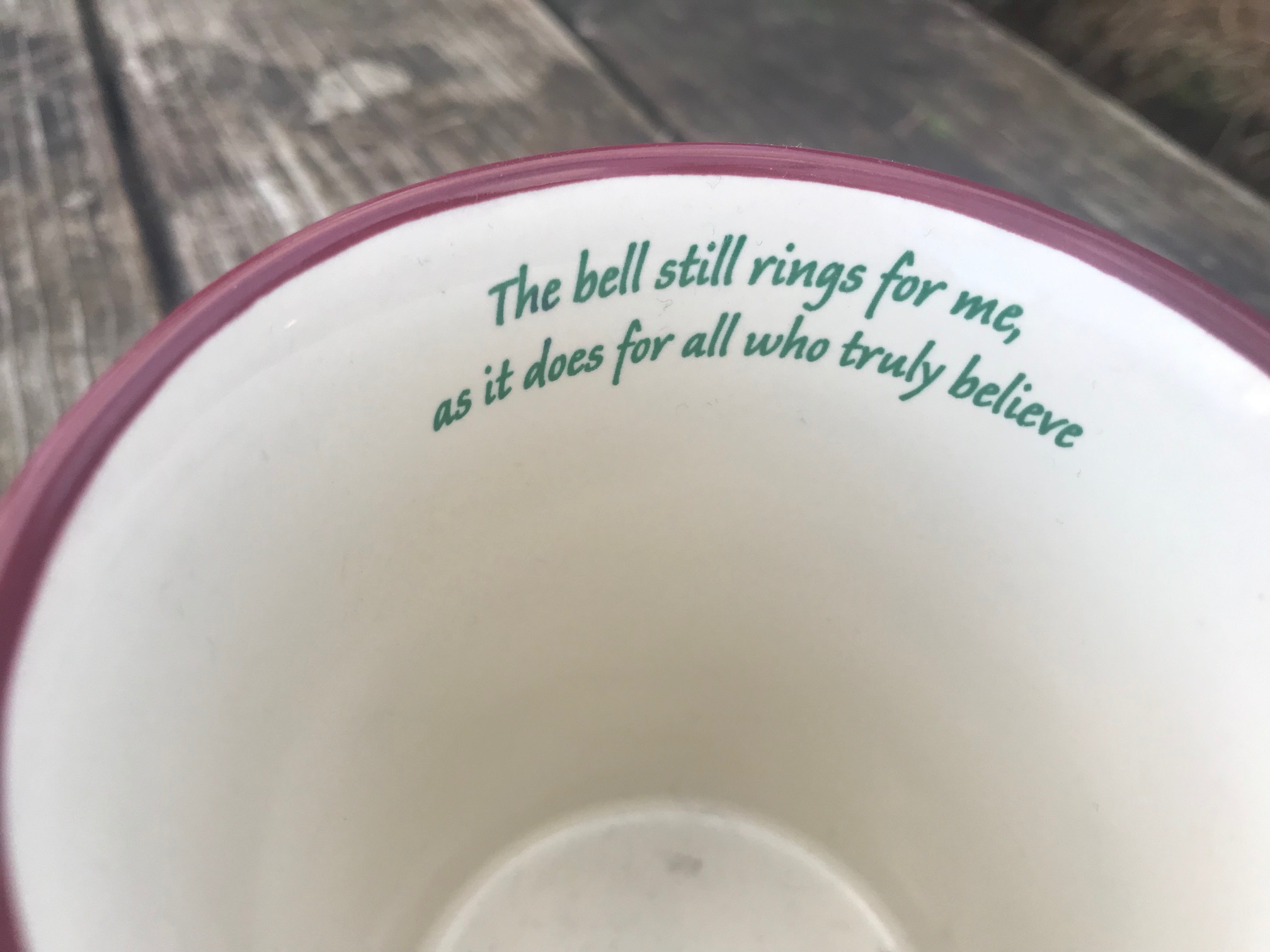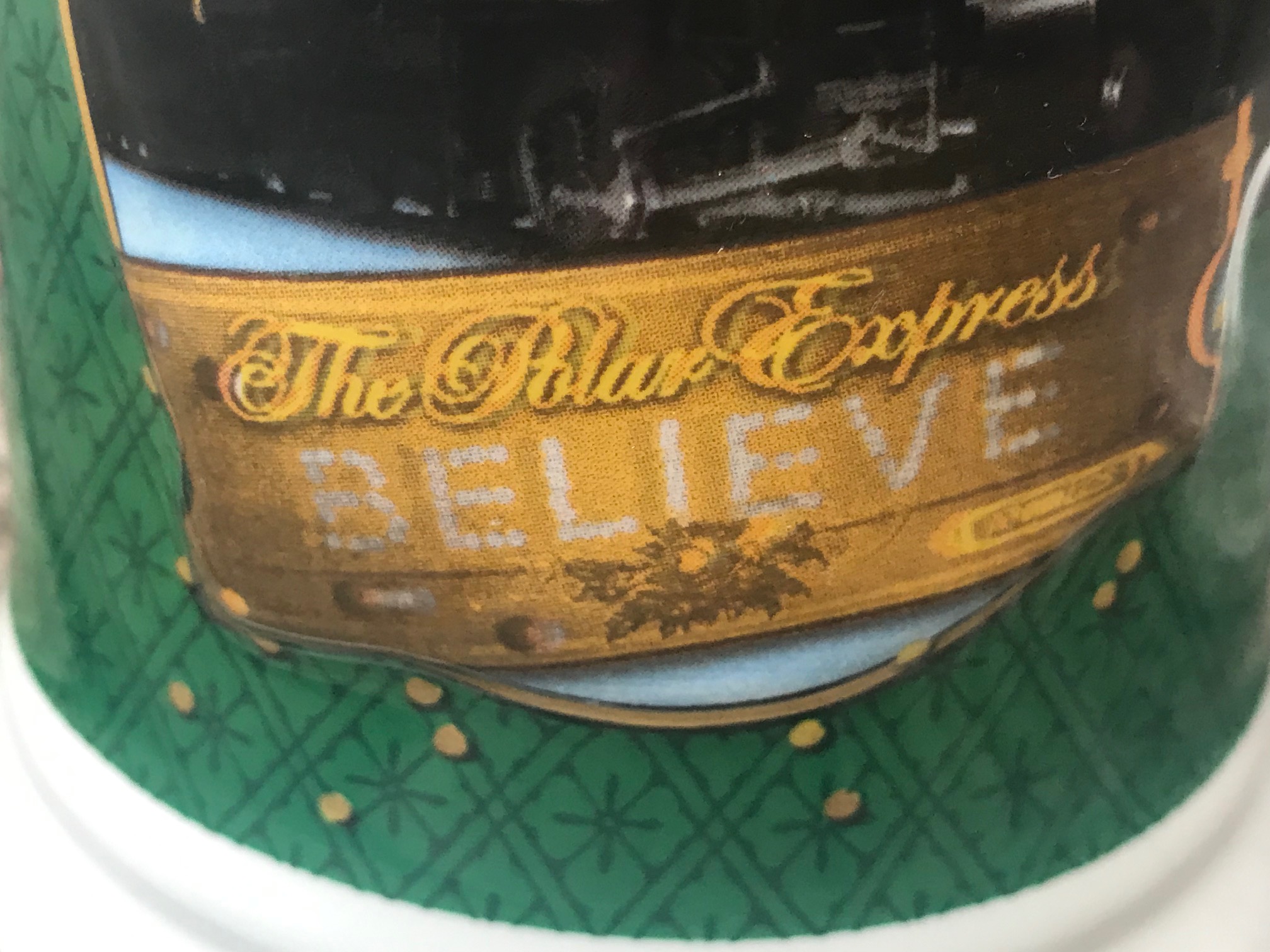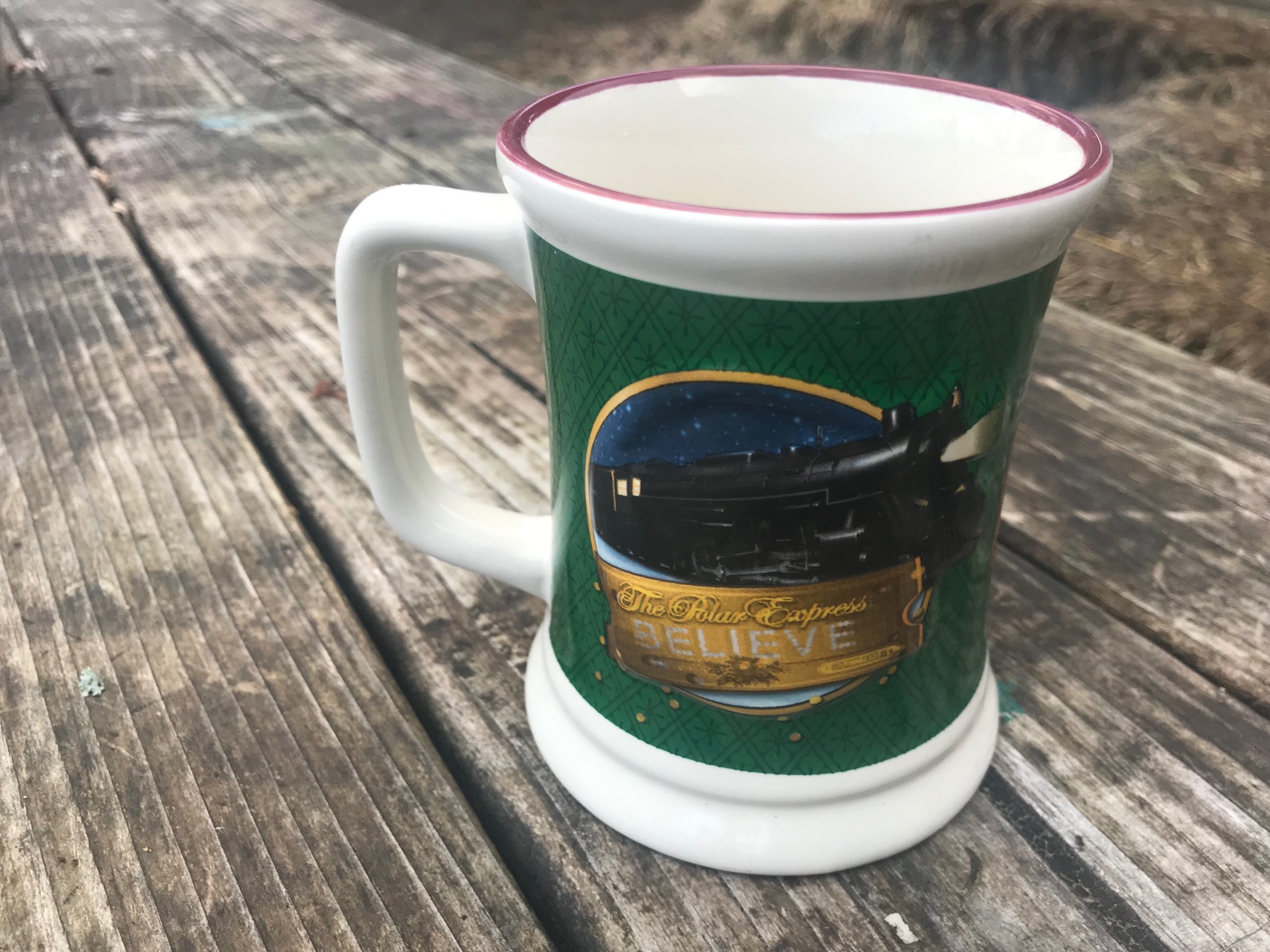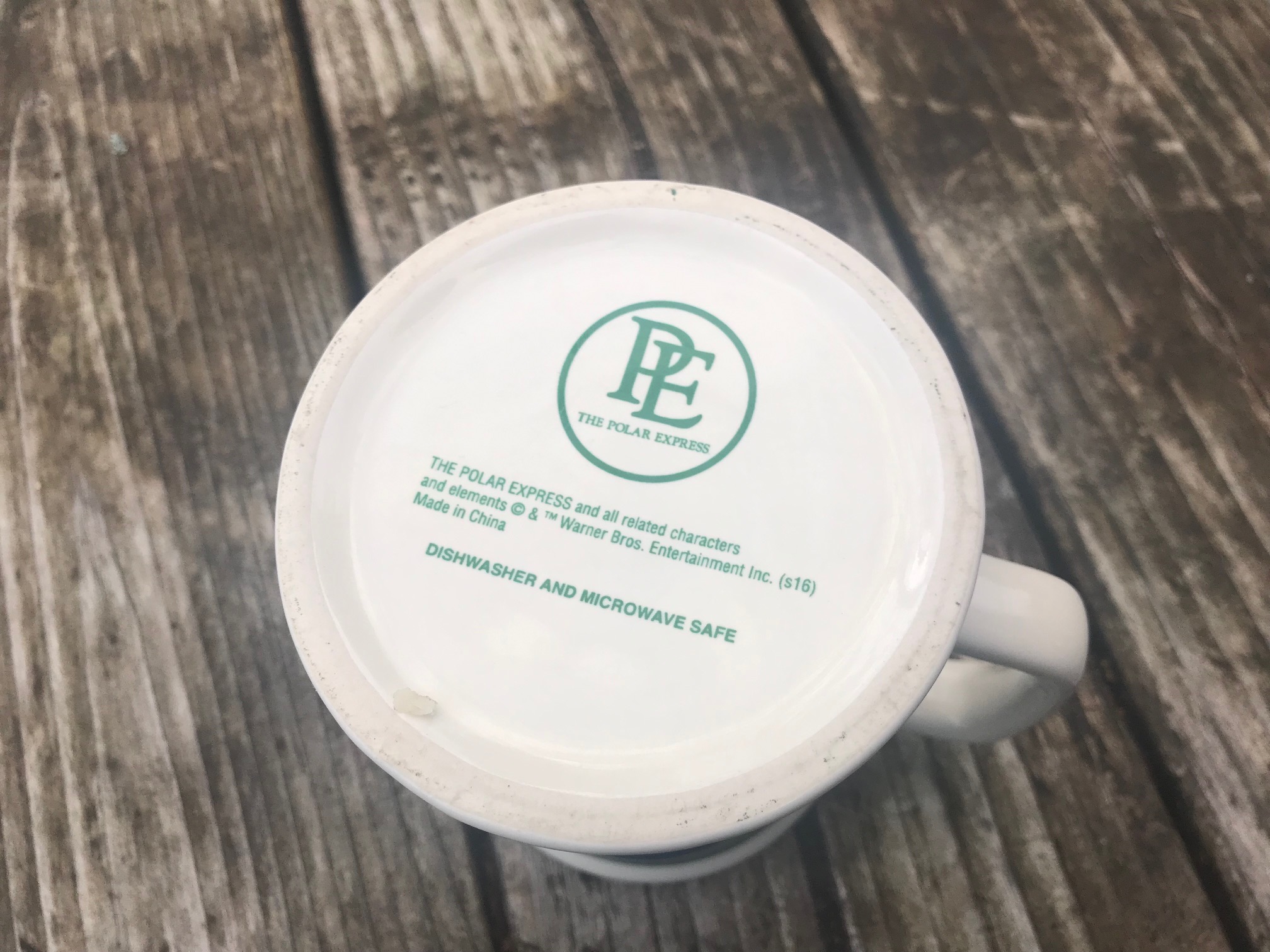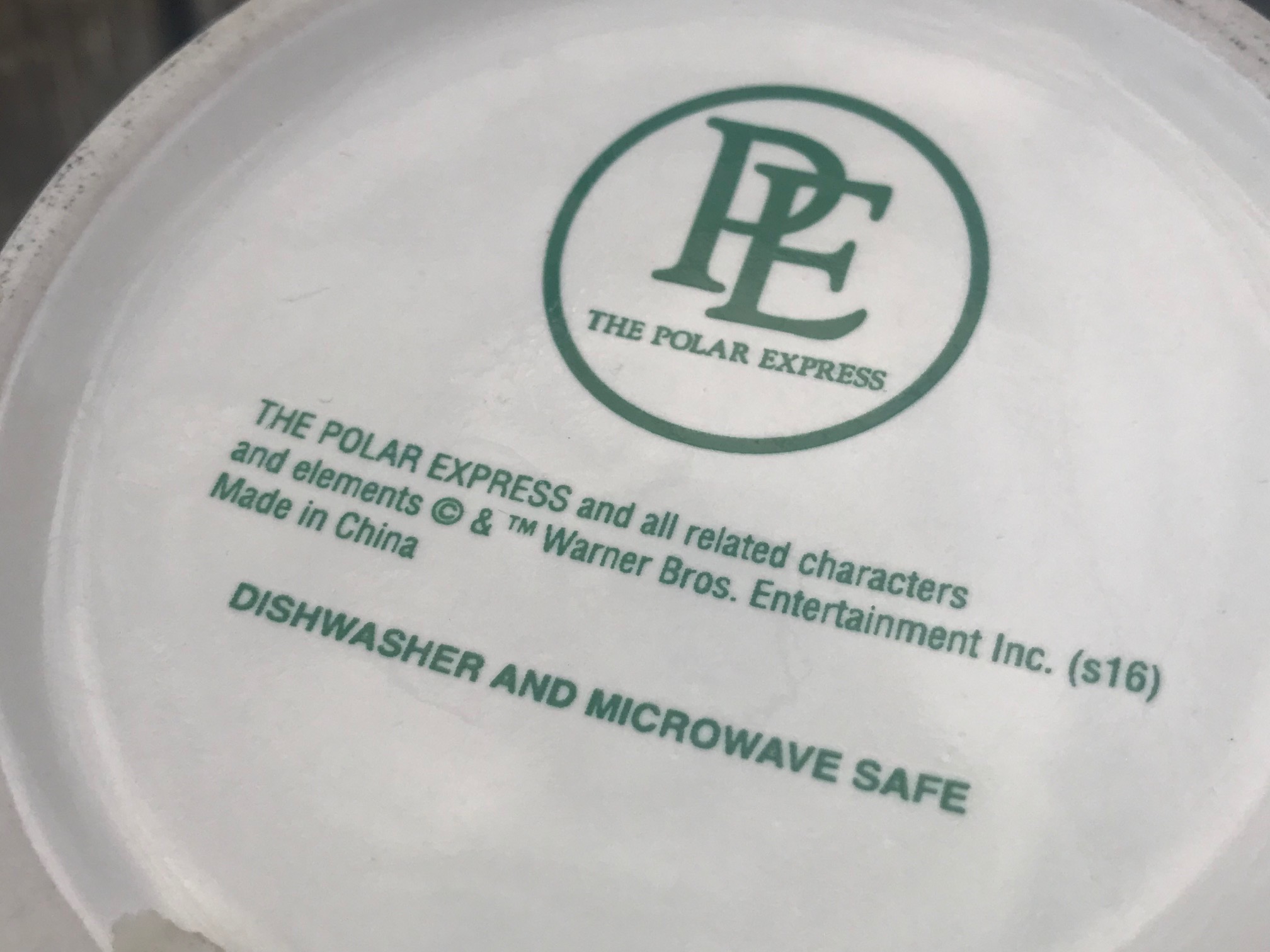C. 2016 “The Polar Express” Christmas Train Mug: 27,600 ppm Lead (90 is unsafe for kids), 358 ppm Cadmium
For those new to this website:
Tamara Rubin is a multiple-federal-award-winning independent advocate for childhood Lead poisoning prevention and consumer goods safety, and a documentary filmmaker. She is also a mother of Lead-poisoned children (two of her sons were acutely Lead-poisoned in 2005). Since 2009, Tamara has been using XRF technology (a scientific method used by the U.S. Consumer Product Safety Commission) to test consumer goods for toxicants (specifically heavy metals — including Lead, Cadmium, Mercury, Antimony, and Arsenic). All test results reported on this website are science-based, accurate, and replicable. Items are tested multiple times to confirm the test results for each component tested. Tamara’s work was featured in Consumer Reports Magazine in February 2023 (March 2023 print edition).
When tested with an XRF instrument, this Polar Express mug was positive for high levels of Lead both inside and out. These are the souvenir mugs you get your hot cocoa in when you go for a ride on a Polar Express train. This is a relatively new mug that my friend got when she and her family took a ride on the Polar Express. There is a “16” on the bottom, so I think it may have been manufactured in 2016.
While these are being sold as a souvenir item on a train (and are therefore likely to be considered exempt from current federal standards), it is important to note that the most likely customer to purchase hot chocolate in this cup is a young child (a parent purchasing hot cocoa for their child). As a result of the most likely customer for this product, an item like this should be regulated to the same strict standards as items expressly made for children’s use. This means that it should be less than 90 ppm Lead in the paint, glaze, or coating, or less than 100 ppm Lead in the substrate. At 27,900 ppm Lead in the exterior glaze and more than 5,000 ppm Lead in the interior (food surface) glaze (!), this item far exceeds these standards and should be considered illegal given the likely and anticipated use by children.
Continue reading below to see the full XRF test results for this mug.
Here’s a link to an example of a similar mug on Amazon.
When testing is done with an XRF instrument, the amount of Lead that is considered toxic/unsafe in the paint, glaze, or coating of an item intended for use by children is any level of 90 ppm and higher. Mugs are not considered “items intended for use by children” (unless they are expressly sold as “baby mugs”) and are not regulated in the same way.
Want some ideas for Lead-free mugs? Check out this piece.
Below are the XRF test results for the mug pictured here. Each different area was tested for at least 60 seconds (for the results reported below). If a metal is not listed it was not detected.
Green Paint on Outside of Mug:
- Lead (Pb): 21,600 +/- 700 ppm
- Cadmium (Cd): 358 +/- 31 ppm
- Barium (Ba): 1,533 +/- 137 ppm
- Chromium (Cr): 6232 +/- 288 ppm
- Zinc (Zn): 11,900 +/- 500 ppm
- Copper (Cu): 270 +/- 67 ppm
- Iron (Fe): 618 +/- 201 ppm
- Vanadium (V): 615 +/- 74 ppm
- Titanium (Ti): 1,363 +/- 130 ppm
- Zirconium (Zr): 15,700 +/- 600 ppm
- Platinum (Pt): 574 +/- 170 ppm
- Cobalt (Co): 4,646 +/- 329 ppm
Continue reading below the image.
Black Area (train) on Outside of Mug:
- Lead (Pb): 27,600 +/- 900 ppm
- Cadmium (Cd): 371 +/- 32 ppm
- Barium (Ba): 1,455 +/- 136 ppm
- Chromium (Cr): 1,998+/- 151 ppm
- Zinc (Zn): 10,500 +/- 400 ppm
- Copper (Cu): 289 +/- 68 ppm
- Iron (Fe): 1,414 +/- 258 ppm
- Vanadium (V): 247 +/- 50 ppm
- Titanium (Ti): 810 +/- 97 ppm
- Zirconium (Zr): 14,400 +/- 600 ppm
- Platinum (Pt): 597 +/- 176 ppm
- Cobalt (Co): 4,827 +/- 334 ppm
Green Glaze on Inside Food Surface of Mug (words):
- Lead (Pb): 5,991 +/- 207 ppm
- Cadmium (Cd): 51 +/- 14 ppm
- Barium (Ba): 1,254 +/- 112 ppm
- Chromium (Cr): 1,053+/- 135 ppm
- Zinc (Zn): 14,300 +/- 500 ppm
- Copper (Cu): 291 +/- 67 ppm
- Iron (Fe): 893 +/- 212 ppm
- Vanadium (V): 1,157 +/- 99 ppm
- Titanium (Ti): 2,338 +/- 176 ppm
- Zirconium (Zr): 15,900 +/- 600 ppm
- Cobalt (Co): 811 +/- 147 ppm
White Glaze on Mug:
- Lead (Pb):83 +/- 17 ppm
- Barium (Ba): 1,457 +/- 87 ppm
- Zinc (Zn): 15,700 +/- 400 ppm
- Copper (Cu): 419 +/- 54 ppm
- Iron (Fe): 1,008 +/- 162 ppm
- Vanadium (V): 1,613 +/- 83 ppm
- Titanium (Ti): 3,285 +/- 154 ppm
- Zirconium (Zr): 19,000 +/- 500 ppm
- Platinum (Pt): 199 +/- 86 ppm
Why is this a problem?
While a newer mug like this has likely been leach-tested and determined to be safe at the time of manufacture, I do have concerns with any newly manufactured functional ceramic piece with Lead levels this high. I have even more concern given there is a high Lead-glazed area found on the inside food surface of this mug. Please read this article for more details about these concerns. The problem with leach testing standards is that they only apply at the time of manufacture. There are no guarantees that an item will not eventually leach after regular and frequent use as intended (months or years after the item was compliant with leach testing standards).
WARNING:
All of the Polar Express mugs I have ever tested have tested positive for high levels of Lead. I would never choose to have one of these in my home and would not want to drink out of one if I visited your home. If you have one of these, maybe use yours for a pencil or pen holder.
As always, thank you for reading and for sharing this work.
Please let me know if you have any questions.
Tamara Rubin
#LeadSafeMama
*Amazon links are affiliate links. If you purchase something after clicking on one of our affiliate links, Lead Safe Mama, LLC may receive a small percentage of what you spend at no extra cost to you. 


Never Miss an Important Article Again!
Join our Email List








